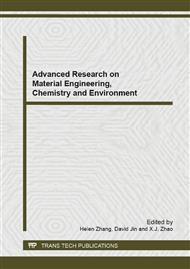p.321
p.325
p.329
p.334
p.338
p.342
p.346
p.350
p.354
The Realization Processes of Dynamic and Integrated Environmental Risk Control System for Residential Projects
Abstract:
The Dynamic and Integrated Environmental Risk Control System (DIERCS) for residential projects means to establish lifecycle dynamic environmental risk control system at first, and then make use of Decision Support System (DSS) to achieve lifecycle dynamic environmental risk control system integration for residential projects. The realization processes both the Dynamic Risk Control System and the Dynamic and Integrated Environmental Risk Control System (DIERCS) for Residential Projects are summarized, which would be beneficial to perfect the theory of environmental risk control system for residential projects.
Info:
Periodical:
Pages:
338-341
Citation:
Online since:
September 2013
Authors:
Price:
Сopyright:
© 2013 Trans Tech Publications Ltd. All Rights Reserved
Share:
Citation:


